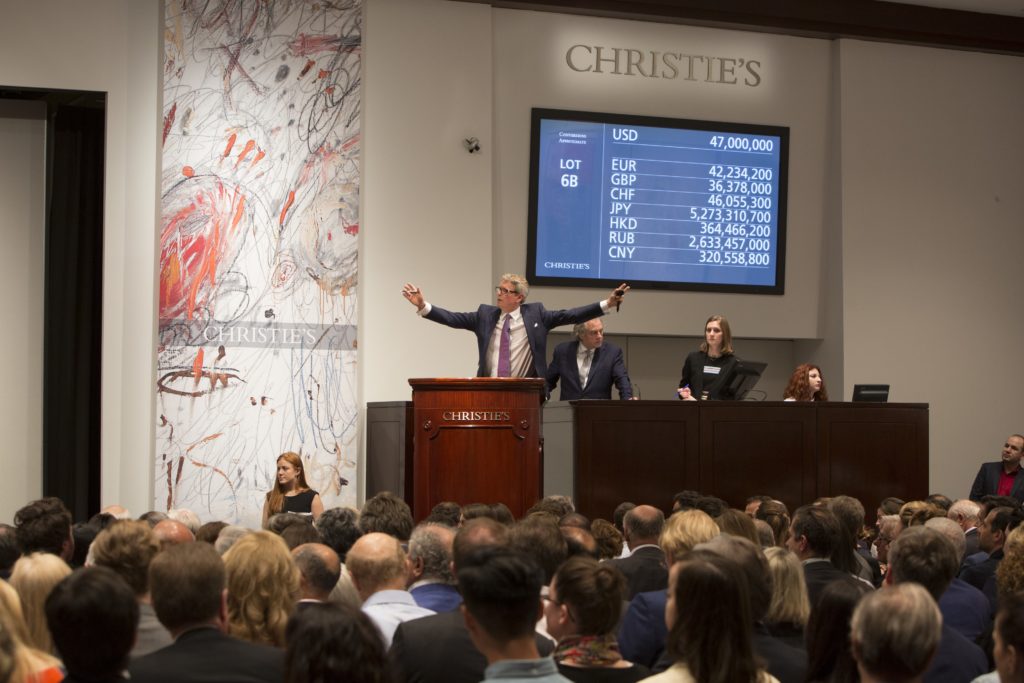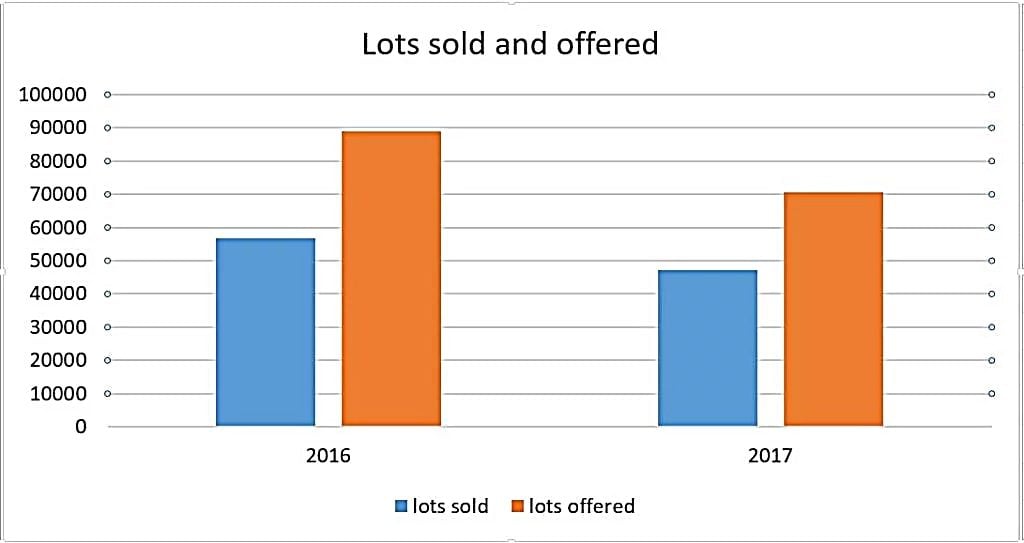Analysis
Contemporary Art Auction Sales Have Shrunk by 20% This Year—Why?
At the same time, the total amount of money generated by these sales rose, our research reveals.

At the same time, the total amount of money generated by these sales rose, our research reveals.

Have auction catalogues—which were, not too long ago, the size of telephone books—seemed thinner to you this year? You’re not imagining it.
New analysis from artnet News and artnet Analytics reveals that global auction houses offered around 20 percent fewer contemporary works of art during the first half of 2017 than in the equivalent period last year. The total number of contemporary works to hit auction blocks worldwide in the first half of the year is down 30 percent when compared to the same period in 2014, when the art market was at its frothiest. The US market, meanwhile, seems to have shed some fat in its downsizing, leading to trimmer, healthier sales.
What’s driving this trend? Some experts say the data confirm that the market has returned to a more rational level of pricing and volume. “The market is beginning to normalize after an overleveraged period. It’s basically a bell curve and it’s shifting back towards a more normal level,” the art advisor Todd Levin, the director of Levin Art Group, told artnet News. “It seemed like the market sort of jumped the shark in 2015.”

Source: artnet Analytics 2017
The number of contemporary works on offer in dedicated postwar or postwar and contemporary sales (70,473 lots at 420 auction houses worldwide) and the number of contemporary works that sold (47,052 lots) both shrunk in the first half of the year, artnet data show. The amount of contemporary art to hit the auction block declined by 20.8 percent, while the amount purchased shrunk by 17.5 percent.
Meanwhile, the US market in isolation reflects a different trend: US auctions offered almost the same number of contemporary works in the first half of 2017 as they did in the equivalent period last year, and sold around nine percent more, according to an analysis of data from 94 auction houses in 2017 and 106 auction houses in 2016. These sales also brought in more money than they did in the equivalent period last year. Contemporary auction sales in the first half of 2017 rose from $987.73 million to $1.3 billion, according to artnet data.
The worldwide reduction in volume is due less, then, to shrinking appetites in the US and more to reductions in Europe and Asia. Sales in North America account for 43 percent of the action this year (up from 35 percent last year). Meanwhile, Europe accounts for 33 percent and Asia, 23 percent (down from almost 31 percent last year).
Shifting focus back to the global stage, the works that did eventually make it to market performed better than in 2016: The global sell-through rate increased from 65.6 percent to 72 percent. Furthermore, while volume was down from 2016, the total amount of money generated by contemporary art at auction was up, illustrating an increasing concentration at the high end of the market. (A spokeswoman from Christie’s points out that the auction house saw a 171% increase in the number of works across categories—not just contemporary—that sold for over £10 million.)
Contemporary art sales raked in $2.72 billion in the first half of the year, 4.7 percent more than last year. Some experts say these figures suggest that the problem is not demand for top-flight contemporary works, but supply; consignors are simply not as willing to part with art. Experts offer varying explanations for what is motivating this trend, however—from auction houses turning away material bought during the boom that they are no longer confident they can sell, to collectors holding onto work they think they can make more money on later.

Source: artnet Analytics 2017
Todd Levin attributes the worldwide dip in sales volume to a reduction in material on the lower end. Flipping—a common phenomenon just a few years ago—is not as popular today, he says. “A lot of that speculative super-young art that was coming up in droves at the auction houses has to a large extent disappeared.”
Other experts suggest the drop reflects the fact that guarantees and waived commissions are not as routinely extended by auction houses to secure coveted material, which has helped boost private sales for auction houses and dealers alike.
“Auctions are no longer overblown affairs and collectors have less of a feeling that they are being played by rigged sales,” says the art advisor Wendy Cromwell. “This is a very smart market that looks for pockets of value and at the same time, chases trophies as a hedge against an economic environment still flush with cheap money.”
She believes that “fundamentally, we are experiencing a very healthy art market,” adding that she has had her busiest summer to date.